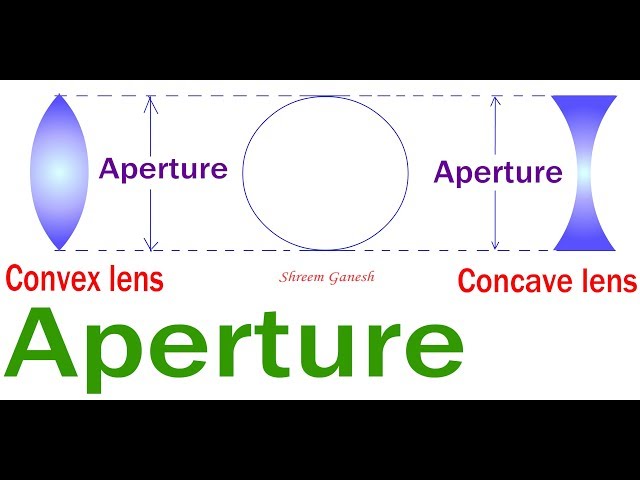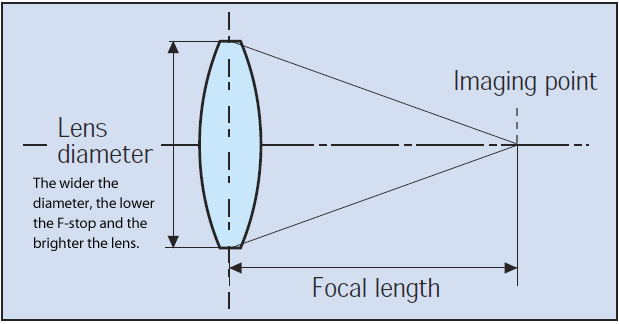What is Aperture of a Lens? A Comprehensive Guide in Understanding Lens Aperture
Introduction
In the world of photography, understanding the basics can take you a long way, and getting to know the aperture of a lens is an essential aspect of these basics. In this comprehensive guide, we demystify the concept, explain its significance in photography, and provide some practical tips for adjusting aperture to capture the perfect shot.
Aperture and Lens: What’s the Connection?
- Significance: Aperture in photography refers to the physical opening in the lens that allows light to pass through to the camera's sensor. Much akin to a human eye's pupil, it expands and contracts to control light ingress, a function primarily affected by changing the 'f-stop'.
- Aperture Size: The size of the aperture is directly proportional to the amount of light allowed in. A larger aperture size means more light and a brighter image, while a smaller one equals less brightness.
- Final Image Impact: Your chosen aperture size influences your final image's clarity, depth, and sharpness. Depending on the desired outcome, be it a brighter image with a shallow depth of field or a darker one with vast depth, aperture adjustments are crucial.
- Lens Control: Remember, mastering aperture adjustments equips you with enhanced control over your camera lens, helping you produce the desired photographic result.
Why is Aperture of a Lens So Crucial in Photography?
Photography relies heavily on the quality of light, and along with shutter speed and ISO, the aperture plays a significant role in controlling this. Here's why the importance of lens aperture in photography cannot be overemphasized:
Lens aperture: The 'Eye' of the Camera
Often equated with the eye of the camera, the aperture undeniably holds a pivotal status in photography. But why so? Let's delve further:
- Light Control: Similar to how our pupil regulates the amount of light entering our eyes, the aperture adjusts the quantity of light that reaches the camera's sensor, thereby affecting the brightness or exposure of the photo.
- Depth of Field: Interestingly, the aperture doesn't merely control light; it also significantly impacts the photo's depth of field or the section of the picture in sharp focus.
- Larger Aperture (smaller f-number): Allows more light entry and produces a shallow depth of field. This setting is perfect for portraits or macro photography, where the focus is on a single subject, and the background needs to be blurred.
- Smaller Aperture (large f-number): Offers less light penetration, resulting in a darker image but with a larger depth of field. This setting is ideal for landscape photography where an extensive field of focus is desirable.
Truly, the aperture serves as the eye of a camera, governing not only the amount of light that enters but also carving the depth of field, thus profoundly influencing the final image.
How Does the Aperture Affect Image Quality?
The Impacts of Adjusting Aperture Settings on a Picture
Modifying the lens aperture settings significantly shapes the overall aesthetic and quality of a photograph. Below are its key influences:
1. Brightness and Exposure: It's all about the light entering the camera. The more extensive the opening of the lens or the larger the aperture (say f/1.4), the brighter the final image will be since more light is allowed in the lens to hit the camera's sensor.
2. Depth of Field: Aperture settings have a direct correlation to the depth of field in a picture. A larger aperture (like f/2.8) increases brightness and sharpens the focus on the subject while blurring out the background, creating a shallow depth of field. This is great for stunning portrait shots. On the contrary, a smaller aperture(like f/16) lets in less light and sharply focuses on more parts of the photo, resulting in a broader depth of field ideal for capturing vivid landscape shots.

3. Sharpness and Detail: Generally, an intermediate aperture setting (around f/8) is observed to render the maximum sharpness, capturing more detail and fine textures. Overly large or small apertures may introduce some level of distortion or diffraction, affecting the sharpness and clarity.

Making smart adjustments to your aperture settings depending on the lighting conditions and your desired photographic outcome can help produce visually alluring images.
Remember, in the world of photography, the aperture isn't just an 'opening in the lens'; it is the chief storyteller, helping breathe life into the ordinary.
Practical Tips: How to Adjust Aperture for Optimal Photography
What techniques can be employed by photographers to fine-tune aperture settings most proficiently?
Mastering the art of adjusting aperture settings is a crucial step to elevate your photography skillset. Here are some strategies that photographers can employ:
1. Experiment with Different F-Stop: As a photographer, don't shy away from testing different aperture settings depending on your scene. For capturing a landscape, you might want a higher f-stop for a more extensive in-focus area, but for portraits, a lower f-stop will blur the background and accentuate your subject.
2. Consider Lighting Conditions: Always consider the lighting situation when adjusting your aperture. Bright environments allow flexibility with smaller apertures, while dark environments often require larger apertures to gather more light.
3. Manage Depth of Field: Remember, the aperture is directly related to depth of field. A wider aperture (low f-number) creates a shallow depth of field, blurring the background, while a smaller aperture (high f-number) extends the depth of field, keeping more details in focus.
4. Match Aperture with Shutter Speed and ISO: Aperture, shutter speed, and ISO work together in photography. A sizeable aperture means that the shutter speed can be faster, and ISO can be lower, reducing noise and improving image quality.
5. Use Aperture Priority Mode: Most DSLR cameras feature an aperture priority mode. This mode allows you to set the desired aperture, and the camera automatically adjusts shutter speed and ISO for best results.
Remember, practice makes perfect. Invest time in experimenting with these strategies, and over time, you'll master aperture settings for brilliant photography.
Conclusion
Adjusting the aperture settings can dramatically alter the appearance of a photo. When you open up the aperture, more light reaches the sensor, brightening the image and creating a shallow depth of field. This depth variation is perfect for portraits or images where you'd ideally want the subject to stand out against a blurry background. Conversely, when you decrease the aperture, fewer lights come in, and you get a deeper depth of field which is useful for images where you wish to have everything, from the foreground to the background, in sharp focus.
Related FAQs about what is aperture of a lens
How does aperture relate to depth of field in a photograph?
The aperture of a lens deeply influences the depth of field in a photograph. A smaller aperture (larger f-number) increases the depth of field, meaning a larger section of the view you see will be sharp, while a larger aperture (smaller f-number) reduces the range and blurs out elements not in focus. This effect can add dimension and emotional impact to your images.
Can the aperture of the lens affect the brightness of the image captured?
Absolutely. Aperture plays a critical role in the exposure triangle of photography, along with shutter speed and ISO. A larger aperture lets in more light, resulting in a brighter image, while a smaller aperture lets in less light, leading to a darker image. Therefore, adjusting aperture is key to manage the brightness of your shot.
What's the basic principle to follow when choosing aperture settings for different light conditions?
The basic principle is to adjust the aperture based on desired image brightness and depth of field. In bright light, you may need a smaller aperture to reduce light intake and avoid overexposure. In dim light, you might opt for a larger aperture to gather more light and brighten your image. But also consider the depth of field and sharpness implications while adjusting the aperture.


